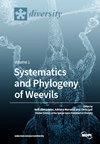利用多光谱航空照片和手持式光谱仪研究印度尼西亚苏邦香蕉血液病和枯萎病的分布规律
IF 2.1
3区 生物学
Q2 BIODIVERSITY CONSERVATION
引用次数: 0
摘要
了解香蕉树的健康状况对农民从香蕉种植中获利至关重要。香蕉枯萎病(Fusarium wilt)和香蕉血液病(banana blood disease, BBD)分别由尖孢镰刀菌(Fusarium oxysporum)和拉尔斯顿菌(Ralstonia syzygii)引起。它们造成了作物产量的下降,因为它们从假茎到果实依次破坏树木。利用无人机(uav)拍摄的多光谱航空照片获得的先进地理空间信息和受感染树木的可靠数据场,可以了解BBD和镰刀菌在人工林中的整个分布。来自多光谱航空照片的植被和土壤指数,如归一化植被差指数、改良叶绿素吸收比指数、归一化水分差指数(NDWI)和土壤pH值,可能不得不依赖于解释这两种疾病的精确位置。本研究使用随机森林算法处理由多光谱和光谱模型组成的大型数据集。结果表明,土壤指数、土壤pH和NDWI是预测两种病害空间分布的最重要变量。同时,如果不考虑香蕉品种的变异,受BBD影响的种植面积比镰刀菌病影响的种植面积更广泛。本文章由计算机程序翻译,如有差异,请以英文原文为准。
A Study on the Distribution Pattern of Banana Blood Disease (BBD) and Fusarium Wilt Using Multispectral Aerial Photos and a Handheld Spectrometer in Subang, Indonesia
Knowledge of the health of banana trees is critical for farmers in order to profit from banana cultivation. Fusarium wilt and banana blood disease (BBD), two significant diseases that infect banana trees, are caused by Fusarium oxysporum and Ralstonia syzygii, respectively. They have caused a decline in crop yield, as they destroy trees, starting sequentially from the pseudostem to the fruit. The entire distribution of BBD and fusarium on a plantation can be understood using advanced geospatial information obtained from multispectral aerial photographs taken using unmanned aerial vehicles (UAVs) and a reliable data field for infected trees. Vegetation and soil indices derived from multispectral aerial photographs, such as the normalized difference vegetation index, the modified chlorophyll absorption ratio index, the normalized difference water index (NDWI), and soil pH, may have to be relied upon to explain the precise location of these two diseases. This study used a random forest algorithm to handle a large dataset consisting of multispectral and spectral models. The results show that the soil indices, soil pH, and NDWI are the most important variables for predicting the spatial distribution of these two diseases. Simultaneously, the plantation area affected by BBD is more extensive than that affected by fusarium if variations in planted banana cultivars are not considered.
求助全文
通过发布文献求助,成功后即可免费获取论文全文。
去求助
来源期刊

Diversity-Basel
Environmental Science-Ecological Modeling
CiteScore
3.40
自引率
12.50%
发文量
925
审稿时长
11 weeks
期刊介绍:
Diversity (ISSN 1424-2818) is an international and interdisciplinary journal of science concerning diversity concept and application, diversity assessment and diversity preservation. It is focused on organismic and molecular diversity. It publishes reviews, regular research papers and short notes in the regular issues. Related news and announcements are also published. Our aim is to encourage scientists to publish their experimental and theoretical results in as much detail as possible. Therefore, there is no restriction on the length of the papers. Full experimental details must be provided so that the results can be reproduced.
 求助内容:
求助内容: 应助结果提醒方式:
应助结果提醒方式:


